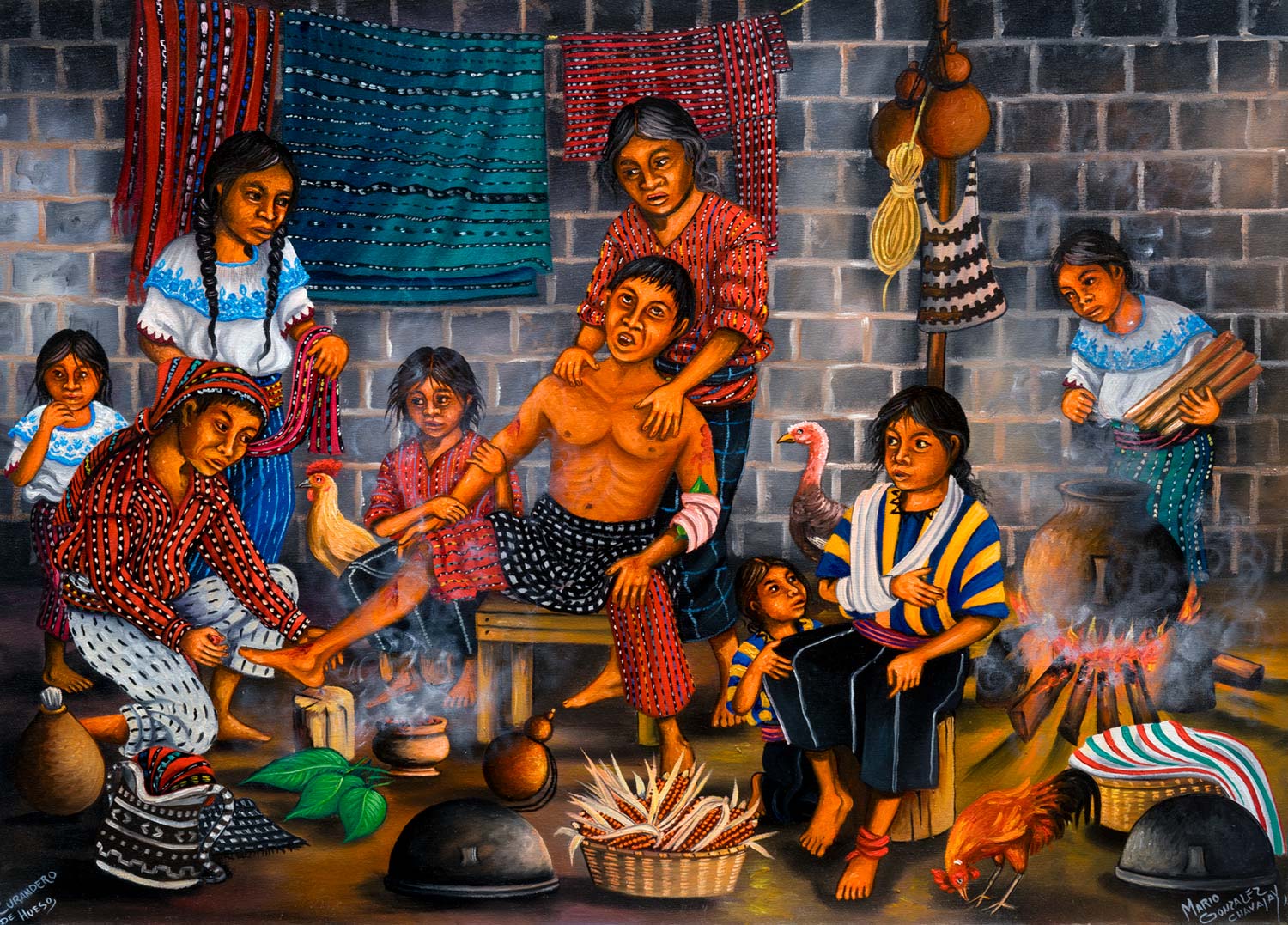Maya healers, like midwives, are guided to their profession by their dreams. They do not choose to become a healer; they are directed to this destination by their dreams. Their dreams also guide them to find and accept a special bone, which is their instrument in the procedure of aligning a bone. For the healer and his patients, the adjustment of the broken bone is done by the special bone that is hidden in the hand of the healer, and which mysteriously locates the break, fixes on it, and exerts an invisible force. The relationship between the healer and his magic bone is called k’o rixiin in the Tz’utujil Mayan language. It literally means a gift that belongs both to the healer and to the magical object that embodies its power. The magical bone and the healer work together by communicating closely with each other to adjust the bone. The healer and his magical bone are bound together as spouses, throughout the life of the healer.
Benjamin D. Paul, an anthropologist at Stanford University, studied the bone healers of San Pedro la Laguna. Paul tells how one healer, Ventura, learned the profession. In a dream, Ventura was told to rebuild a collapsed skeleton. When Ventura said she didn’t know how to do it, she was told to use the magical bone. With this special bone she began to identify the different bones of the body while rebuilding the skeleton, starting from the toe, and going all the way up.
According to Paul, a comparison of the healers of San Pero “reveals a common pattern. The candidate encounters a small, bone-like object that moves, and in a dream is instructed to pick it up. He keeps it and for some time—which may be short or may last several years—he does not react to the enigmatic messages he receives. He usually suffers from it in some way until he begins to put his calling into practice. No one teaches him, only in dreams is he told how to heal; and in any case it is the secret bone that does the work.”1
The healer realigns a fracture by manipulating and massaging the area of the break with his mystical bone. He then applies heated tobacco leaves to the wound and wraps it all in a tight bandage and, when necessary, a splint. For him, it is the special bone that does the healing; he is just the person who applies the instrument. The patient may offer him money for the service or may offer food; but because his profession is sacred, the healer never charges.
- From the journal Ethnology, Volume XV, No. 1, January 1976.


